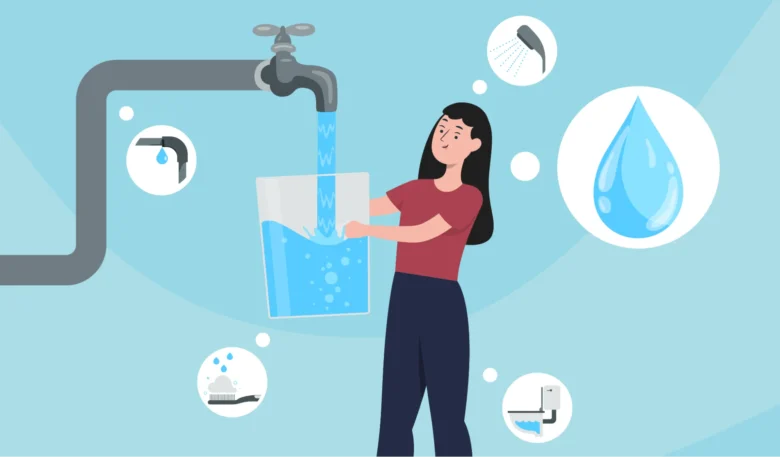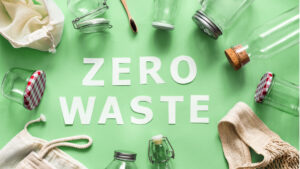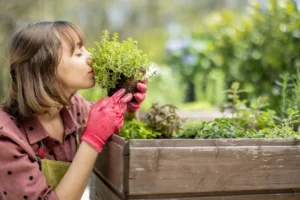Despite being one of the most valuable resources on Earth, many people tend to underestimate its importance. While water scarcity and environmental sustainability may seem like global issues, individual actions can make a huge difference. Saving water at home can help protect the environment, lower energy bills, and lead to more sustainable lives. This article offers some basic water-saving strategies for everyday use to protect the environment.
Saving Water in the Kitchen
The kitchen is a busy place, and water consumption can be significant. Simple adjustments in cooking and cleaning can save significant water. Wash fruits and vegetables in a basin instead of running water, and reuse the rinse water for watering plants. Good dishwashing habits are also important. A full dishwasher uses less water than washing dishes by hand, but filling one basin with soapy water and another with rinse water is more water-efficient than leaving the tap running.
Another often-overlooked tip is to store drinking water in the refrigerator so you don’t have to run the tap to cool it. Only use plenty of boiled water for cooking. This reduces heat consumption and saves water and energy. Small actions can have a giant impact in the long run.
Saving Water in the Bathroom
Almost 60% of indoor water consumption comes from the bathroom. Simple improvements and careful practice can save significant amounts of money. Replacing outdated showerheads with water-saving ones can save water without reducing water pressure. Repairing leaky faucets and toilets is also important, as even a slowly dripping faucet can waste a significant amount of water daily.
Shortening your shower by two minutes can save dozens of liters of water per week. Using a dual-flush toilet or placing a full plastic bottle in the toilet tank can help reduce water consumption with each flush. Consider turning off the faucet while brushing your teeth or shaving. These simple bathroom adjustments can significantly reduce your household’s water consumption.
Tips for an Efficient Laundry Room
Another place where you can save water without sacrificing cleanliness is the laundry room. Make sure you have plenty of clothes on before starting the washing machine. Although modern washing machines are water-efficient, a partial load often uses as much water as a full load.
Newer washing machines with energy-saving settings not only use less water and electricity but also deliver better results. If upgrading isn’t an option, adjust the settings to select the right load size and choose a shorter wash cycle. Hanging clothes on a clothesline or drying rack saves energy and extends their lifespan, contributing to your sustainability efforts.
Outdoor Water Conservation
Outdoor water use is often overlooked, but it can have a significant impact on your water bill. Watering plants morning and evening reduces evaporation and allows your garden to absorb more water. Using a watering can prevents waste and allows for more precise watering than a garden hose.
Installing a rain barrel can also help. Collecting rainwater for watering and cleaning your garden saves municipal water and uses a free resource. Covering your swimming pool when not in use reduces evaporation. Pay attention to the maintenance of your outdoor space. Using barrels instead of garden hoses can save significant water when washing your car and sweeping roads.
Smart Garden Design
Your garden design choices can have a significant impact on water conservation. Native or drought-tolerant plants, adapted to the conditions in your region, require less water. Hydrological zoning organizes plants with similar water needs to avoid overwatering those that require less water.
Replacing parts of your lawn with gravel, mulch, or permeable groundcover can reduce water usage and enhance visual appeal. Drip irrigation directly nourishes plant roots, reducing evaporation and runoff. Well-designed outdoor spaces can reduce the amount of water needed for a healthy and vibrant landscape.
Community Involvement and Education
Individual efforts are important, but collaboration can achieve greater results. Community involvement can raise awareness and encourage participation in water conservation. Some municipalities and NGOs offer workshops, events, and resources to educate residents about water conservation.
Volunteering to plant trees or clean up can also help keep local waterways healthy. When neighbors, friends, and family share tips and experiences, sustainable practices spread. Communities can foster a culture of water conservation for everyone.
Small Changes, Big Impact
Conserving water at home is more than just a practical step toward sustainability; it’s a commitment to future generations. By adopting simple habits and making smart water choices in your kitchen, bathroom, laundry room, and outdoor spaces, you can contribute to your family and the environment.
Take the first step. Monitor your water usage and identify areas for improvement. No effort is too big to save water. By making smart decisions and involving the community, we can all work together toward a sustainable future.
FAQs
1. Why is water conservation important?
Conserving water saves natural resources, lowers energy bills, and reduces strain on water systems. Environmental responsibility and personal responsibility require water conservation.
2. How can I detect small water leaks in my home?
Checking the water meter before and after a two-hour water outage is a simple leak test. If the meter reading fluctuates, there may be a leak.
3. Is it worth buying water-efficient appliances?
Water-efficient appliances can save money in the long run by lowering energy bills and improving energy efficiency. They also have a lower environmental impact and are a sound investment.
4. When should I water my plants?
Early morning or late afternoon are the best times to water. Plants absorb more water, and watering at these times reduces evaporation.
5. How does conserving water affect energy consumption?
Because less energy is used to heat and purify water, reducing water usage can lower your home’s energy consumption.




